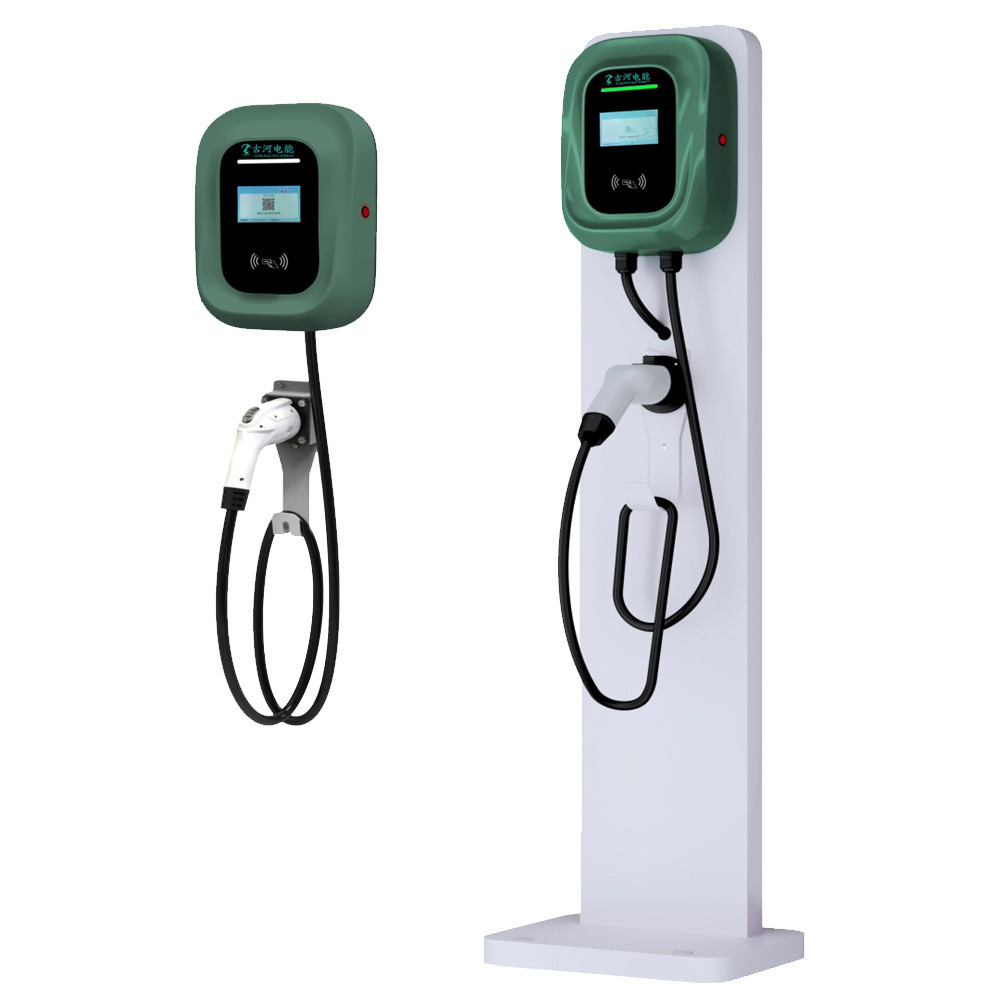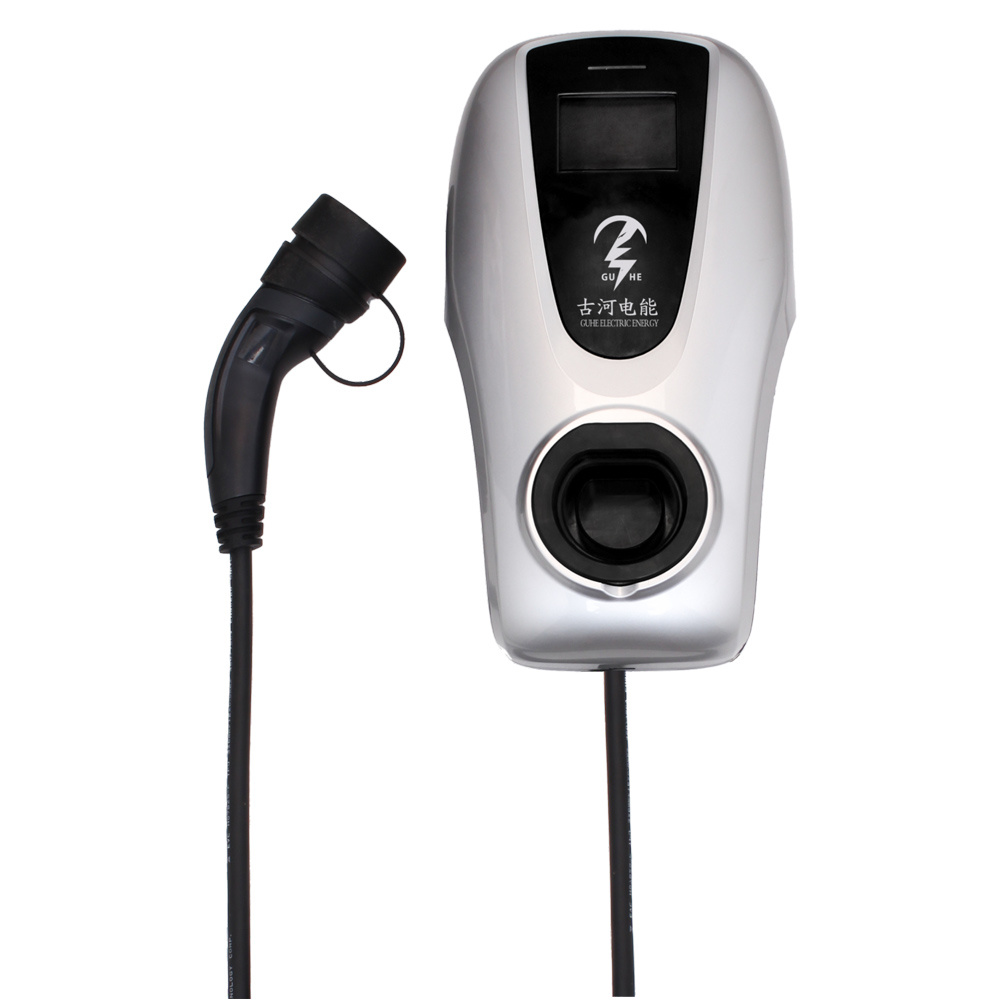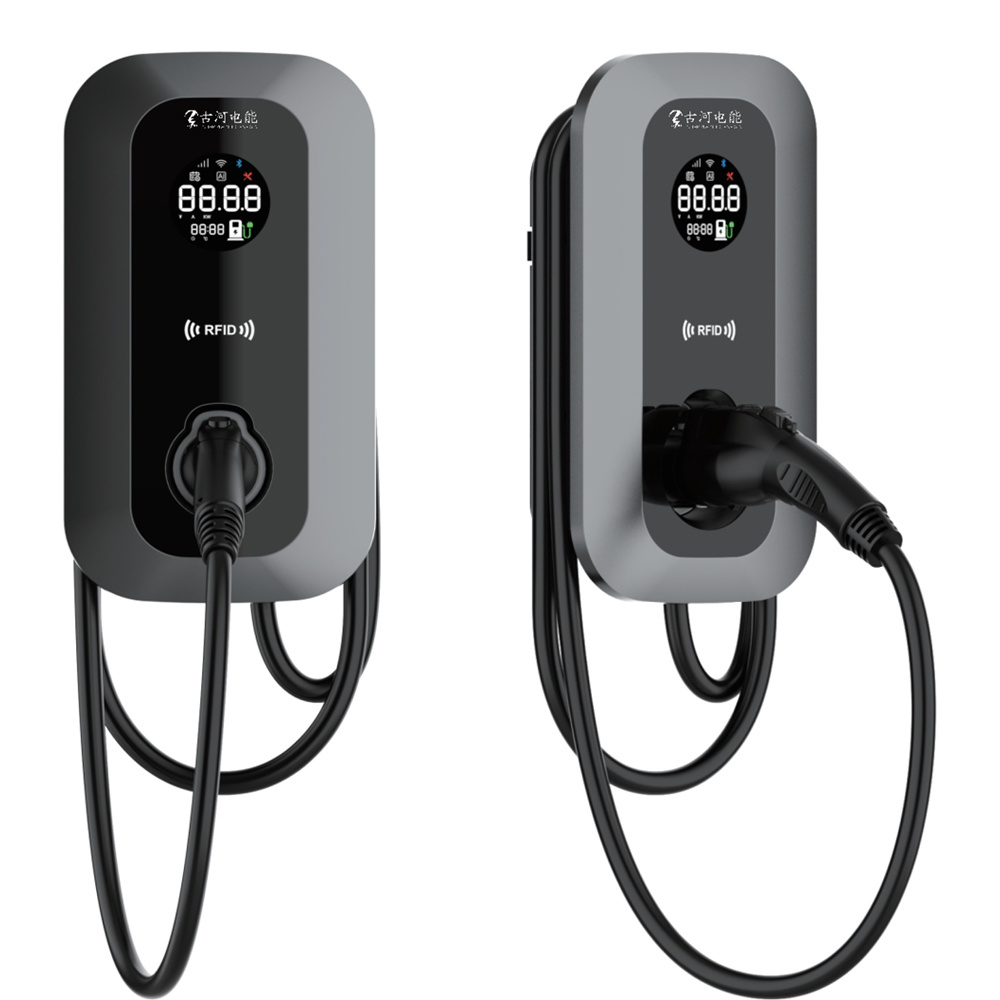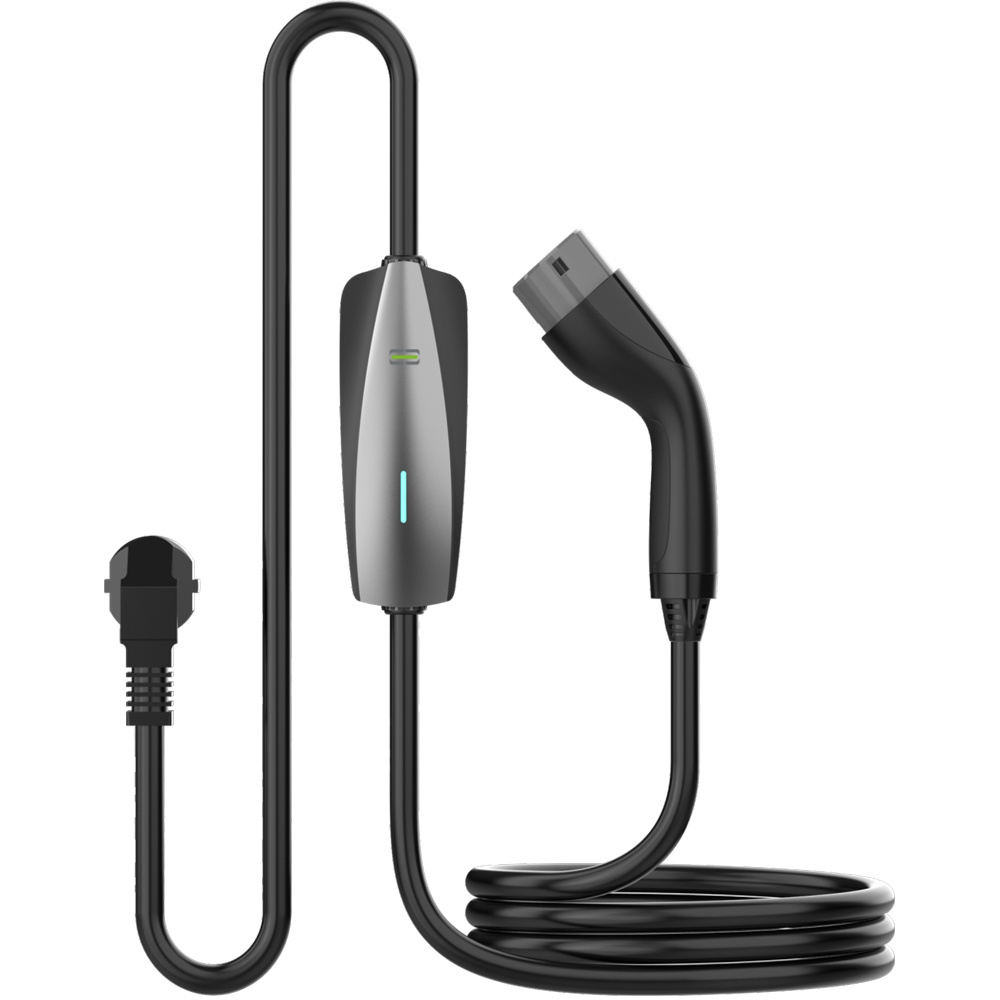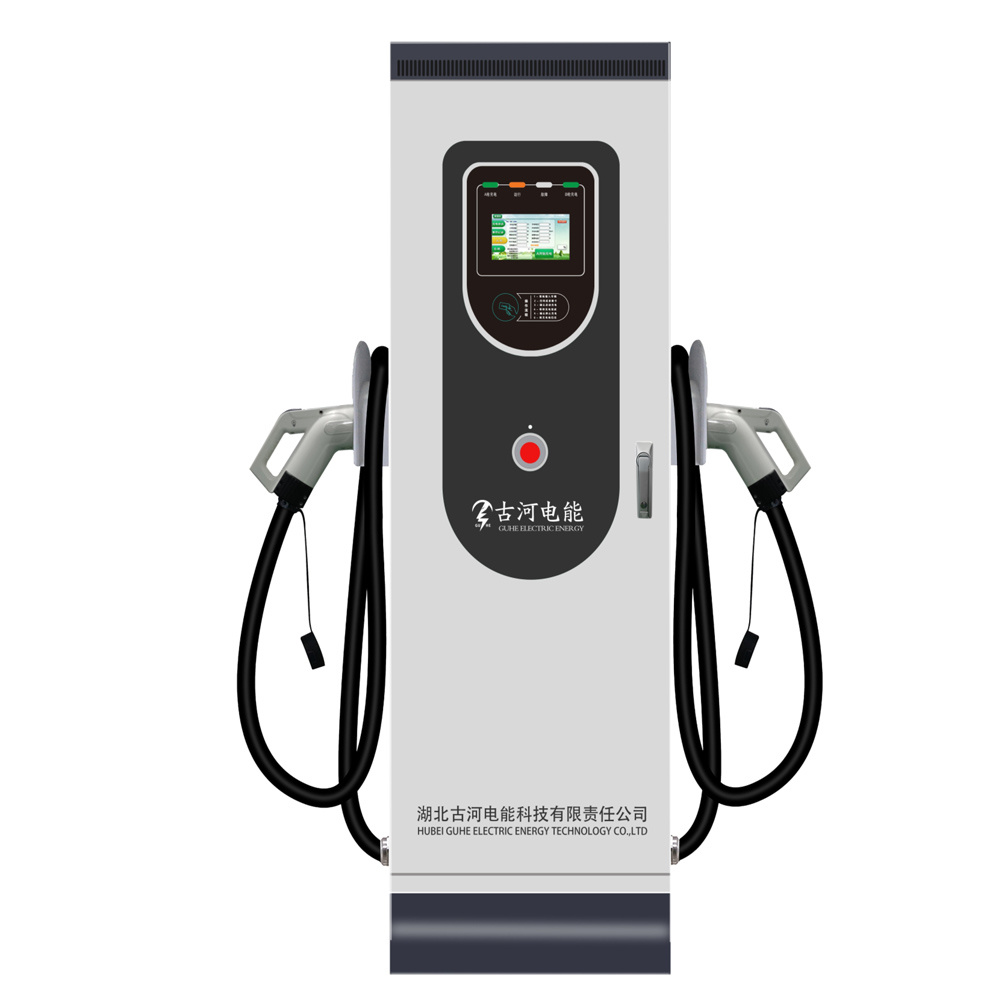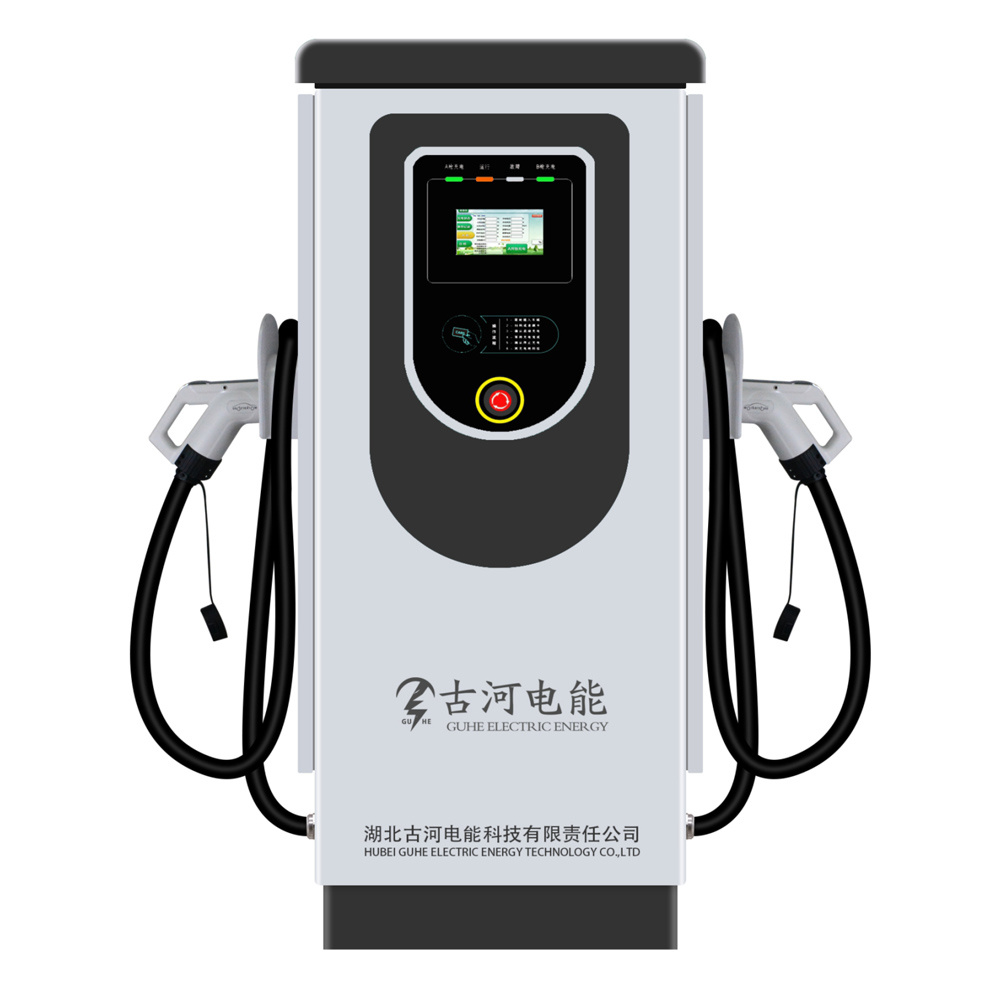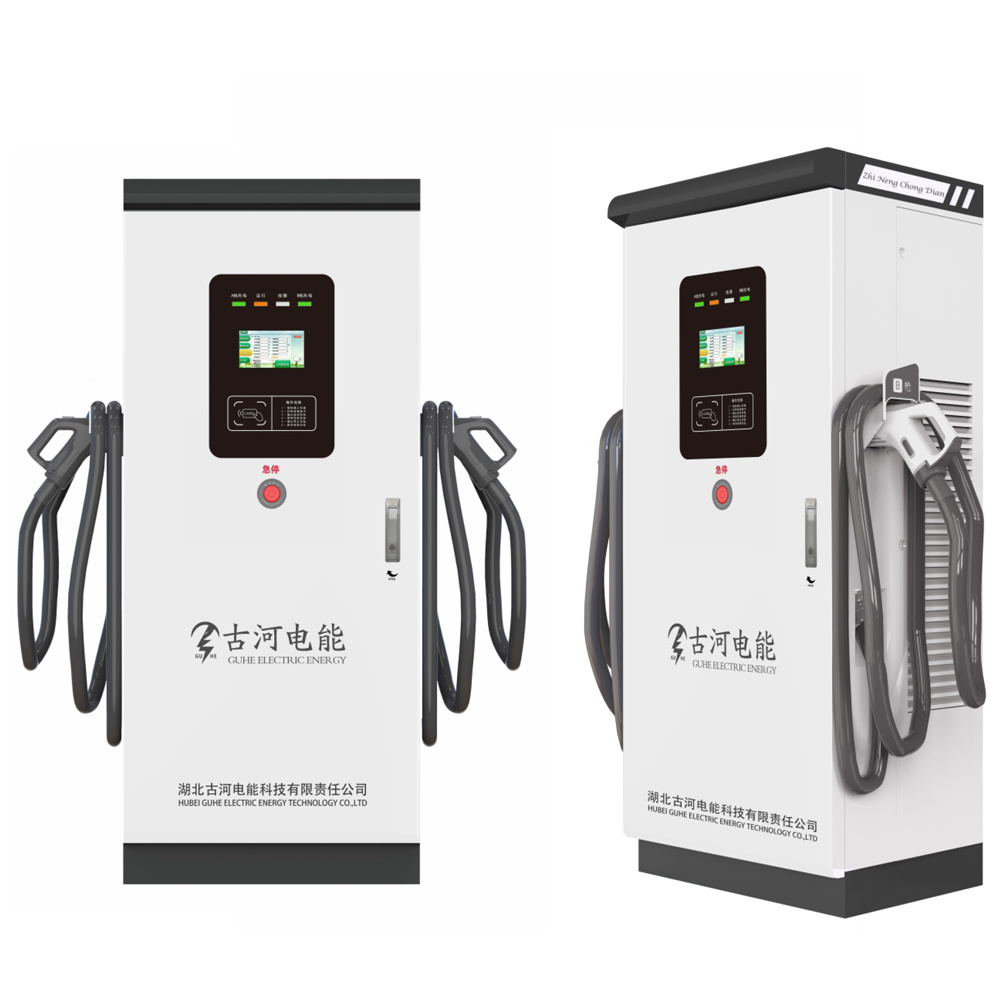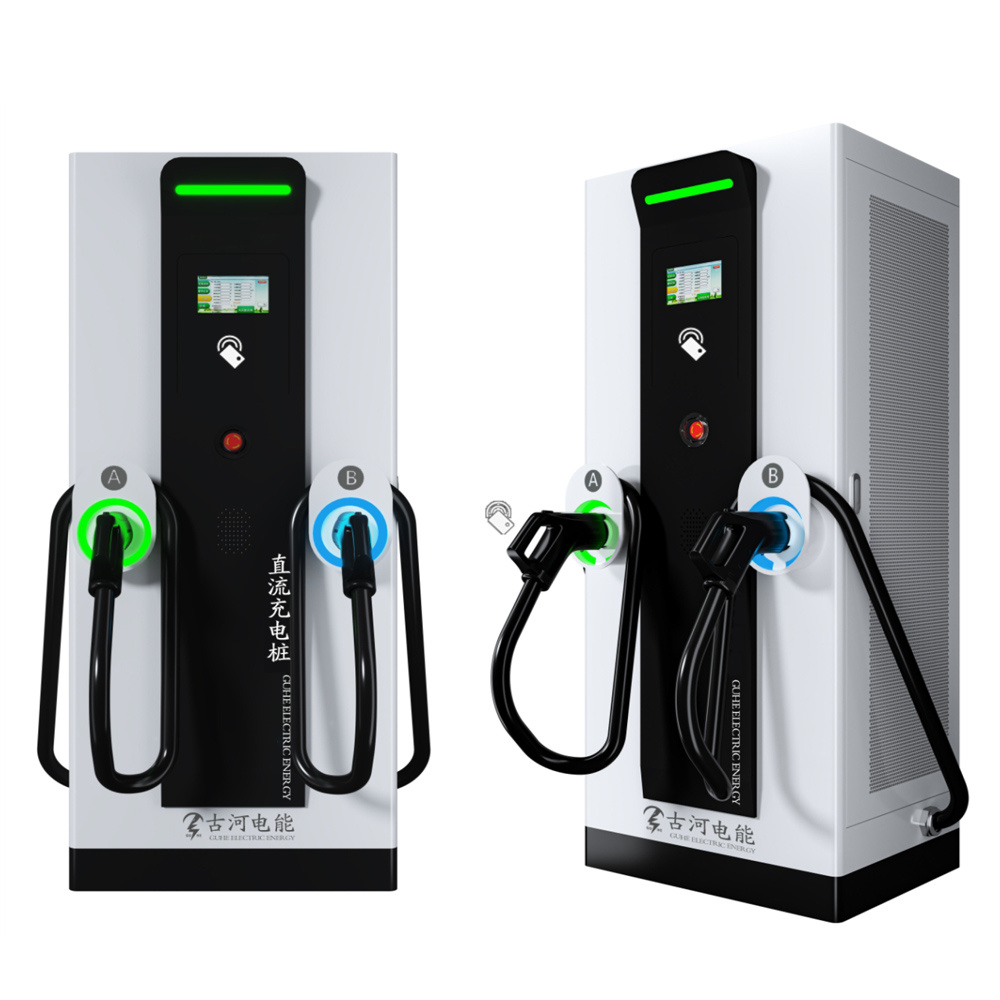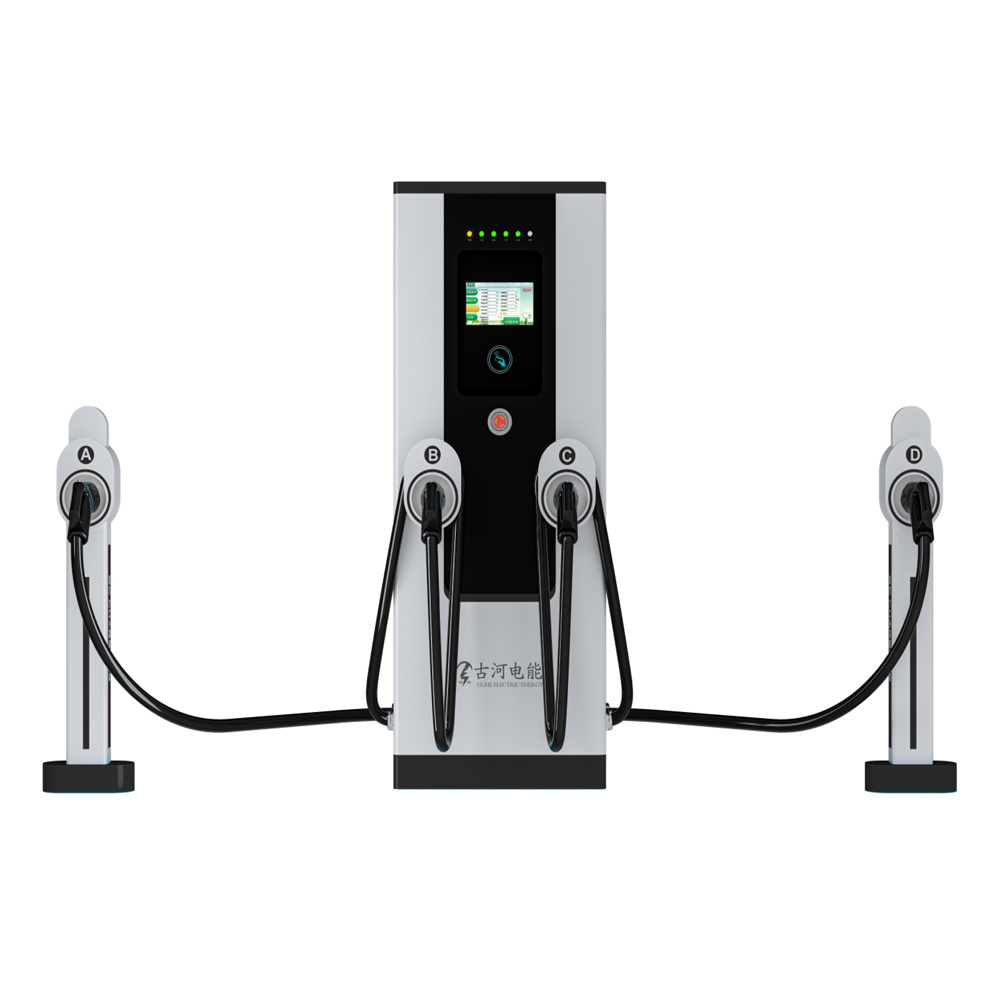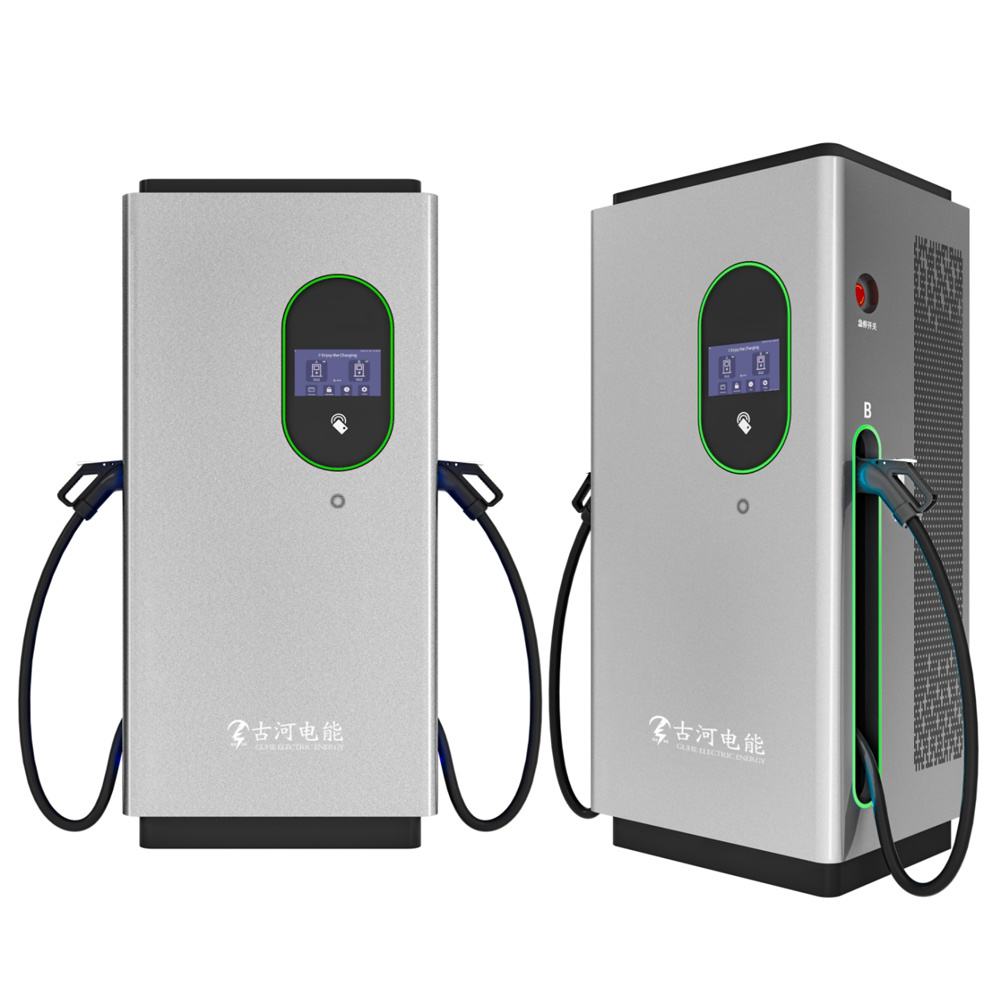FAQ
How to judge whether the charging pile is working properly?
- Observe the indicator light of the charging pile: during normal operation, the indicator light should show the corresponding state, such as the power indicator light is always on, the charging indicator light flashes, etc. If the indicator light does not light up, flashes abnormally, or displays an error code, there may be a problem.
- Check the display (if any): check whether the display can normally display charging information, such as voltage, current, charging time, etc. If the display screen is black, colorful, or disordered, it may be abnormal.
How to calculate the charging cost of charging pile?
- Timeshare:
- Peak hours (such as daytime working hours, etc.): different regions of the peak electricity price is different, generally per kilowatt-hour electricity may be from 0.8 - 1.8 yuan or even higher.
- Peak hours (e. g. off-peak hours on normal working days, etc.): usually around 0.5 - 1.5 yuan per kilowatt-hour.
- Low period (e. g. night, etc.): the lowest price, can be as low as 0.3 - 0.9 yuan per degree of electricity, etc.
- Single electricity price: some charging piles (especially some old ones or those that are not connected to the power grid for their own use) may be charged at a fixed electricity price such as 0.5 - 1 yuan/degree.
How much is the charging speed of different types of charging piles (such as AC piles and DC piles) different?
The charging speed of the DC pile is much faster. The common DC pile power is 30kW, 60kW, 120kW or even higher. For example, using a 60kW DC pile to charge an electric vehicle with the above 50kWh battery capacity may only take about 50 minutes to fully charge.
What conditions and procedures are required for the installation of charging piles?
- Have a fixed parking space: This is the basis for installing the charging pile to ensure that the charging pile has a suitable installation location.
- For example, your own garage, parking space, or a long-term lease and a parking space licensed by the property.
- Power conditions: The power supply line and capacity that can meet the power demand of the charging pile are required near the parking space.
- For example, some of the old community may be insufficient power capacity, the need for power capacity.
- Comply with safety standards: the installation position cannot affect the fire passage, there can be no flammable and explosive materials, etc., and must comply with relevant safety regulations.
Safety issues in the use of electric vehicle charging piles
1. Electrical safety
The charging pile power supply is generally connected from the standby switch of the power supply in the power distribution room, and the capacity does not exceed the total capacity of the power supply. It is separated from the lighting circuit of residential users and will not affect the normal power consumption of users.
2. Fire safety
The location of charging piles shall meet the requirements of fire safety and be far away from flammable, explosive, pollution and other dangerous sources. The shell and internal connector of the charging pile are made of flame retardant materials to meet the fire protection requirements. The protection device of the charging pile cooperates with the upper power protection device to form protection. When the charging line is overloaded during the charging process of the vehicle, the overload protection in the charging pile will trip in time, disconnect the power supply, and isolate the fault. When the charging pile body or the line between the charging pile and the power distribution room is overloaded, the power switch will trip, disconnect the power supply in time, avoid accidents, and ensure that users can charge safely.
Charging pile installation how to charge?
充电桩的安装收费情况因地区、充电桩类型(如慢速充电桩、快速充电桩)、功率、安装公司以及是否需要电力增容等多种因素而异。以下是一个大致的收费情况概述:
一、设备费用
充电桩主机费用:充电桩的价格根据品牌、功率和型号的不同而有较大差异。一般来说,慢速充电桩(如7kW和11kW)的价格较为便宜,通常在1500元至3000元之间。而快速充电桩的价格则更高,因为其功率更大,价格可能在数千元至数万元不等。
线缆和其他配件费用:除了充电桩主机外,还需要购买线缆、插头、插座等配件,这些费用也会根据具体需求和品牌而有所不同。
二、安装费用
施工费用:安装充电桩需要专业的电工或安装团队进行,因此会产生施工费用。这部分费用包括上墙费、接地费、布线费等,通常合计在几百元至数千元不等。具体费用取决于充电桩的安装位置、安装难度以及安装公司的定价策略。
电表和电源线申请费用:在安装充电桩之前,通常需要向当地电力公司申请安装电表和电源线。这部分费用包括电表费、材料费以及可能的申请费用等,大约在几百元至数千元不等。具体费用取决于当地电力公司的政策和收费标准。
三、电力增容费用
如果家庭或商业用电容量不足以支持充电桩的安装,可能需要申请电力增容。电力增容的费用取决于增容的容量和当地电力部门的政策,可能会产生较高的费用。
四、其他费用
电缆费用:如果需要在户外或车库内铺设较长的电缆,还需要支付相应的电缆费用。电缆费用根据长度和材质的不同而有所差异,一般在几百元至数千元之间。
设计费用:对于复杂的安装项目,可能还需要支付设计费用。这部分费用由专业的设计师根据具体需求进行评估和报价。
五、总费用范围
综合以上各项费用,安装一个充电桩的总费用可能在数千元至数万元不等。具体费用还需根据实际情况进行评估和计算。
六、建议
在安装充电桩之前,建议先咨询当地的专业安装公司和电力公司,了解详细的收费情况和相关政策。
根据自身需求和预算选择合适的充电桩类型和安装方案。
在选择安装公司时,要注意选择有资质、信誉良好的公司进行合作,以确保安装质量和后续服务的可靠性。
Charging car charging pile universal?
Charging car charging pile is universal in general, but it needs to meet certain conditions.
General Conditions and Standards
Comply with national standard:
Electric vehicles and charging piles must meet national standards. Since 2015, five national ministries and commissions have jointly issued five national standards for electric vehicle charging interfaces and communication protocols (referred to as GB 2015), which will be formally implemented on January 1, 2016. These standards focus on the safety and compatibility of charging piles.
Since then, in order to further improve the technical level and safety of charging facilities, the state has issued new standards, such as GB/T 18487.1-2023 and GB/T 27930-2023, which were issued on September 7, 2023 and formally implemented on April 1, 2024.
Supply voltage requirements:
The power supply voltage of the charging pile should match the charging demand of the electric vehicle. For example, AC charging piles with a capacity of less than 7kw usually use 220V single-phase AC, while AC charging piles with a capacity of more than 7kw use 380V three-phase AC.
Generality Description
When both the electric vehicle and the charging pile meet the above national standards and the power supply voltage and other conditions match, they can be used universally. This means that car owners can charge their electric vehicles on different brands of charging piles, provided that these charging piles follow the same national standards.
Special circumstances
Although most charging piles are universal, there are still some special cases. For example, certain brands or models of electric vehicles may have special charging interfaces or communication protocols, which may prevent them from charging on certain charging piles.
Alternatively, due to regional differences and different grid conditions, some charging piles may need to be appropriately modified or adjusted to meet the charging needs of specific electric vehicles.
In addition, it does not rule out the problem that some piles cannot be charged due to software problems and do not match the cars of other manufacturers, or the charging will be cut off occasionally. In addition, imports such as Tesla will not be universal. The most common problem is the communication protocol. Many charging piles or electric vehicles are not fully implemented in accordance with the national standard, so there will be places in the protocol that cannot be intercommunicated, resulting in no match.
Conclusion
In summary, charging car charging piles are universal in most cases, but the premise is that they must meet national standards and match the power supply voltage and other conditions. At the same time, car owners should also pay attention to the existence of special circumstances to ensure that their electric vehicles can be charged smoothly on charging piles of different brands.
Does the higher the output power of the charging station mean the faster the charging speed?
No, it's not. Due to the limited power of the car battery during the charging phase, when the output power of the DC charging pile reaches a certain upper limit, the larger power will not bring faster charging speed. Therefore, the significance of the high-power DC charging pile is that it can support dual connectors and output high power at the same time to charge two electric vehicles at the same time. In the future, when the electric vehicle battery is improved to support higher power charging, you can consider investing in upgrading the charging station again.
The higher the output power of the charging station, the faster the charging speed, but this conclusion is affected by many factors.
Relationship between 1. output power and charging speed
Proportional relationship:
Generally speaking, the charging output power is proportional to the charging speed. High output power means that more power can be transferred to the electric car battery in the same time, so the charging speed will be faster.
Example Description:
The output power of the DC charging pile is usually much higher than that of the AC charging pile. For example, the output power of the DC charging pile can reach 60kW to 120kW, while the output power of the AC charging pile is generally between 3.5kW and 21kW. Therefore, when charging with DC charging piles, the charging speed of electric vehicles will be significantly faster than that of AC charging piles.
2. other factors that affect the charging speed
Although the output power is an important factor affecting the charging speed, it is not the only factor. Here are some other factors that can affect charging speed:
electric car battery capacity:
An electric vehicle with a larger battery capacity will take longer to fully charge at the same output power.
Charging interface and communication protocol for electric vehicles:
The charging interface and communication protocol of electric vehicles need to match the charging pile, otherwise it may affect the charging speed.
Charging voltage and current of electric vehicles:
The charging interface of an electric vehicle has a set input voltage and current, and the charging voltage and current of the charging pile cannot exceed the upper limit of the charging interface of the electric vehicle. Therefore, electric vehicles of different brands and models will have different charging speeds.
Battery level:
Generally speaking, the lower the battery power, the faster the charging speed; the higher the battery power, the slower the charging speed. This is because the battery management system of electric vehicles will adjust the charging power according to the battery status to protect the battery from damage.
Battery temperature:
Battery temperature is too high or too low will affect the charging speed. In the optimal temperature range (usually 10°C to 30°C), the battery can obtain the fastest charging speed.
Simultaneous use of other electrical equipment:
If other electrical equipment of the electric vehicle (such as air conditioning, audio, etc.) is used at the same time during the charging process, the charging speed may be reduced.
3. Conclusion
In summary, the higher the output power of the charging station, the faster the charging speed. However, this conclusion is affected by many factors, including the battery capacity of the electric vehicle, the charging interface and communication protocol, the battery power level, the battery temperature, and whether other electrical devices are used at the same time. Therefore, when choosing a charging station, in addition to considering the output power, other factors need to be comprehensively considered to ensure the best charging experience.
Precautions
In the actual charging process, it is recommended that the owner choose the appropriate charging method and charging time according to the actual situation of the electric vehicle and the conditions of the charging station.
At the same time, in order to extend battery life and improve charging efficiency, it is recommended that car owners check the battery status before charging and follow the charging guidelines of electric vehicle manufacturers.
How is the charging pile project installed?
With the rapid popularization of electric vehicles, the demand for charging piles has also increased. The charging pile installation project has become an important industry. For the use of electric vehicles, the charging pile installation project also plays a very important role, so let's talk about the charging pile installation project.
Summary of 1. charging pile installation project
The charging pile installation project is a process of installing the charging pile system on the parking space where the vehicle is located, and providing electric energy through the connection with the electric vehicle. The process relies on professional power engineering skills, as well as on-site site assessment, design, construction and other skills to operate.
Steps of 2. charging pile installation project
1. On-site inspection
Before the installation of charging piles, on-site evaluation is required, including parking lot site evaluation, parking space evaluation, power evaluation, safety evaluation, etc. Through on-site evaluation, the foundation settings and power system required for charging piles can be determined, as well as other necessary conditions.
2. Design scheme
According to the results of the field assessment, a feasible installation scheme is developed for the installation of charging piles. Among them, it is necessary to take into account the number of charging piles, power demand, electrical lines, geological conditions and other factors.
3. Installation and construction
After the design plan is completed, installation and construction shall be carried out on site. In the process of installation and construction, it is necessary to operate in strict accordance with the design scheme, while ensuring the construction quality and safety.
4. Testing and debugging
After the installation is completed, the system needs to be tested and debugged. It is mainly to test whether the charging pile can work normally, check whether the electrical circuit is connected correctly, and whether the safety protection devices can be started normally.
5. Acceptance assessment
After the charging pile installation project is completed, acceptance assessment is required. The process will evaluate the installation quality, safety and other aspects to ensure that the charging pile system can work properly and meet relevant safety standards and regulations.
Demand and Prospect of 3. Charging Pile Installation Project
At present, electric vehicles have become an important means of transportation in the world. Therefore, the charging pile installation project will also become an important industry in the future. According to different market needs and product characteristics, the types and manufacturers of charging piles will also increase.
At the same time, with the emergence of electric vehicles, charging piles will also have a wide range of applications, such as the future in the distributed energy system, charging piles will be used for power storage and regulation; in smart cities, charging piles will be used for vehicle flow monitoring and power management.
In summary, the charging pile installation project is an industry with great potential and prospects, and it also plays an important role in the future energy saving and emission reduction and smart city construction.
How to install charging pile?
The installation steps of charging piles usually include the following main steps, which may vary depending on the region, power company and specific installation conditions. The following is a more general installation process:
1. preparation phase
1. Confirm the installation conditions:
Confirm that there is a fixed parking space and a facade (e. g. wall or procurement charging pile column) for installing charging piles.
Confirmation of the right to use the parking space certificate (such as parking space title certificate or lease contract).
Obtain the permission of the property or the relevant management party, and obtain the stamped "Registration Certificate for Installation of Charging Facilities".
Confirm that commercial electricity can be connected to the lines or cells of the national grid to provide a stable power supply.
2. Select the charging pile:
Select the appropriate charging pile according to the model and demand, considering the compatibility, power, safety, intelligence and after-sales service and other factors.
3. Preparation of materials:
Prepare electronic scanned copies and photocopies of parking space use certificates, parking space title certificates or lease contracts and other parking space-related supporting documents.
Car purchase certificate, such as the electronic scan and copy of the purchase contract, purchase letter of intent and other documents.
The charging pile qualification certificate shall be prepared according to the selected charging pile type.
Copy of ID card and other personal identification documents.
Proof of consent to the installation of the property, issued and stamped by the property or the relevant management.
2. application for installation
1. Download and register the power company APP:
According to the different power companies in the region, download the corresponding power company APP (such as State Grid APP or China Southern Power Grid APP).
2. Submission of application:
After entering APP, select the electricity service, and then click the charging pile to report the installation.
Follow the steps to provide the required materials, including the prepared documents described above.
3. Awaiting review:
After submitting the application, wait for the power company or charging pile manufacturer to review the materials. Generally, it takes about 7 working days. After passing the examination, the power supply plan and quotation will be given.
3. installation construction
1. Installation of electric meter:
The power company will contact you about 2 days after the application is completed to conduct a survey before the meter is installed.
After the survey is completed, the power company will send staff to install the meter. Note that the meter should be installed near the charging pile to facilitate meter reading and inspection.
2. Installation of charging pile:
(1) On-site inspection
Before the installation of charging piles, on-site evaluation is required, including parking lot site evaluation, parking space evaluation, power evaluation, safety evaluation, etc. Through on-site evaluation, the foundation settings and power system required for charging piles can be determined, as well as other necessary conditions.
(2) Design scheme
According to the results of the field assessment, a feasible installation scheme is developed for the installation of charging piles. Among them, it is necessary to take into account the number of charging piles, power demand, electrical lines, geological conditions and other factors.
(3) Installation construction
After the design plan is completed, installation and construction shall be carried out on site. In the process of installation and construction, it is necessary to operate in strict accordance with the design scheme, while ensuring the construction quality and safety.
(4) Testing and debugging
After the installation is completed, the system needs to be tested and debugged. It is mainly to test whether the charging pile can work normally, check whether the electrical circuit is connected correctly, and whether the safety protection devices can be started normally.
(5) Acceptance assessment
After the charging pile installation project is completed, acceptance assessment is required. The process will evaluate the installation quality, safety and other aspects to ensure that the charging pile system can work properly and meet relevant safety standards and regulations.
4. acceptance and use
1. Acceptance:
The power supply company or the charging pile manufacturer shall check the function and safety of the charging pile.
After passing the acceptance, the meter shall be sealed, the corresponding electric card shall be made and delivered to the user.
2. Use:
After the installation and acceptance, the charging pile can be used to charge the electric vehicle.
Regularly check the appearance and wiring of the charging pile, and repair or replace it in time if it is damaged or loose.
Comply with the rules and tips of the charging pile to ensure the safety of the charging process.
Please note that the above steps may vary by region and circumstances. When installing charging piles, it is recommended to consult a local power company or a professional charging pile installation company for more accurate information and guidance. At the same time, it is necessary to comply with relevant laws and regulations and regulations on construction, electricity, and environmental protection to ensure that the installation and use of charging piles meet the requirements of safety, environmental protection and public services.





